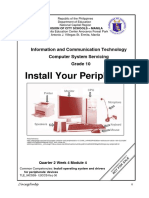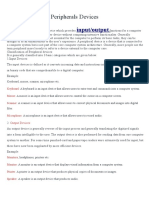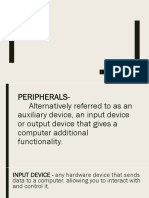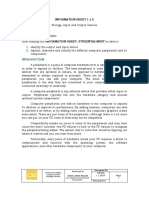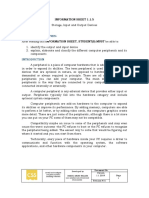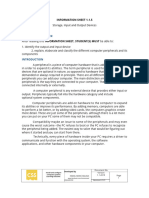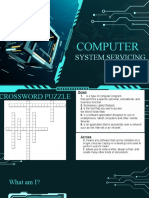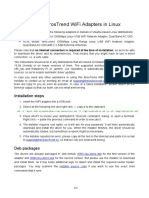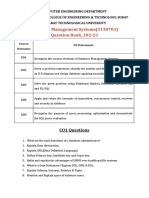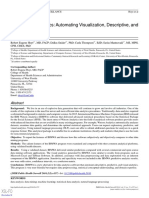0% found this document useful (0 votes)
52 views5 pagesActivity Sheet 4 Introduction To Computer Peripherals
The document is an activity sheet for Grade 9 and 10 students focusing on computer peripherals in an ICT/Computer Systems Servicing class. It includes exercises to classify devices as input, output, or storage, a multiple-choice quiz, and a reflection section on the importance of peripheral devices. Students are required to complete the activities and submit the worksheet at the end of the session.
Uploaded by
jharedcaoile04Copyright
© © All Rights Reserved
We take content rights seriously. If you suspect this is your content, claim it here.
Available Formats
Download as DOCX, PDF, TXT or read online on Scribd
0% found this document useful (0 votes)
52 views5 pagesActivity Sheet 4 Introduction To Computer Peripherals
The document is an activity sheet for Grade 9 and 10 students focusing on computer peripherals in an ICT/Computer Systems Servicing class. It includes exercises to classify devices as input, output, or storage, a multiple-choice quiz, and a reflection section on the importance of peripheral devices. Students are required to complete the activities and submit the worksheet at the end of the session.
Uploaded by
jharedcaoile04Copyright
© © All Rights Reserved
We take content rights seriously. If you suspect this is your content, claim it here.
Available Formats
Download as DOCX, PDF, TXT or read online on Scribd
/ 5




